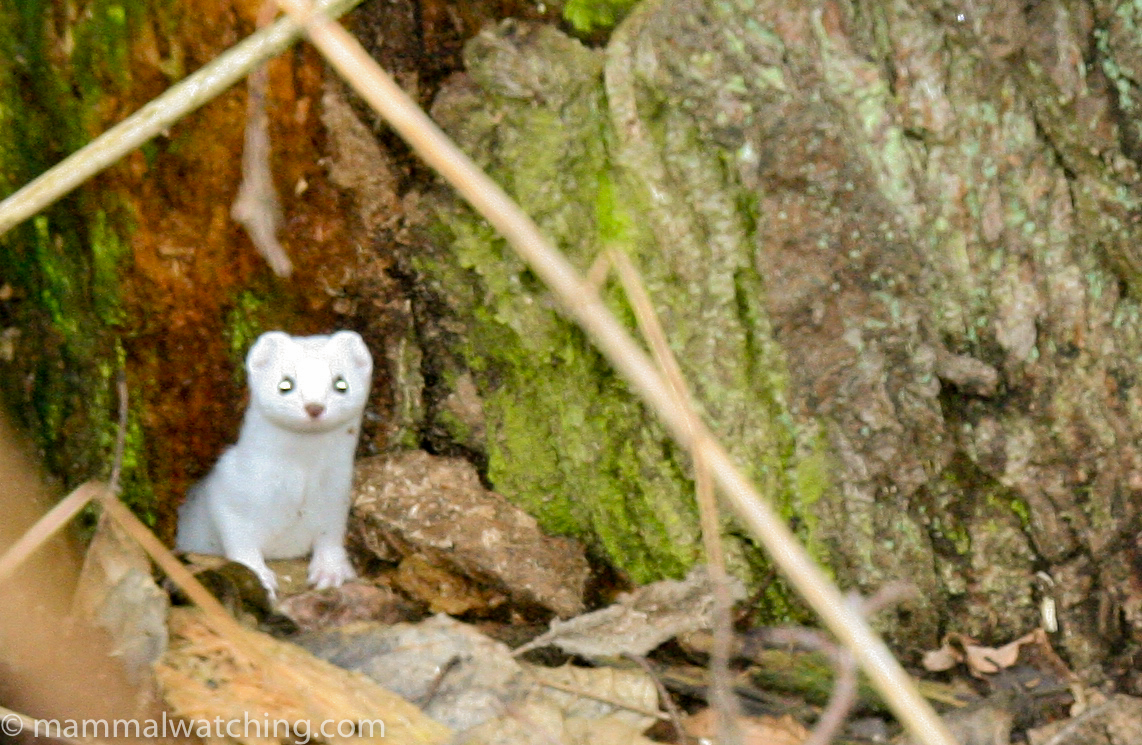
Poland
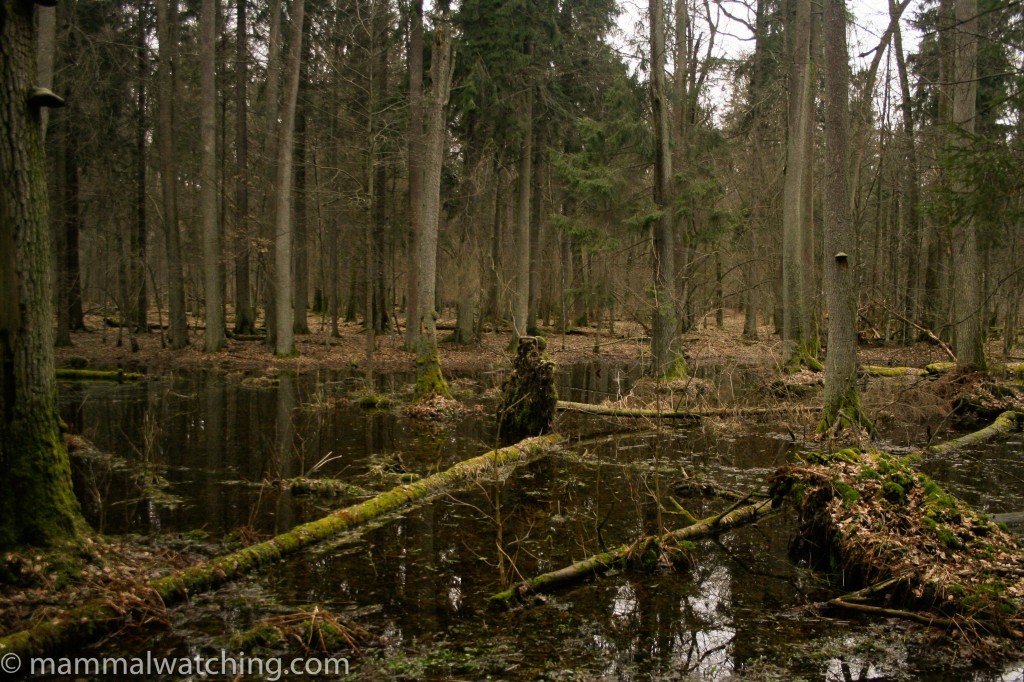
Bialoweisa Forest
In February 2008 I took my first trip to Poland (only my second trip to Eastern Europe) and spent a long-weekend in Bialoweisa Forest, north-east of Warsaw on the border with Belarus.
Bialoweisa Forest
Bialoweisa is about a 4 hour drive from Warsaw, once you get out of the grid locked capital. I was in a rush as usual, so used a guide Michal Polakowski. Michal was a good guy and was happy to work as hard as possible to find mammals, though his true expertise is birds.
I spent three nights in Bialoweisa “Village” (more of a town in my opinion). The hotels were nice and the food was superb – go those potato pancakes, mushrooms and the Russian dumplings. It was difficult to spot a sober Polish man over the age of 16 after 7 p.m. on a Saturday night.
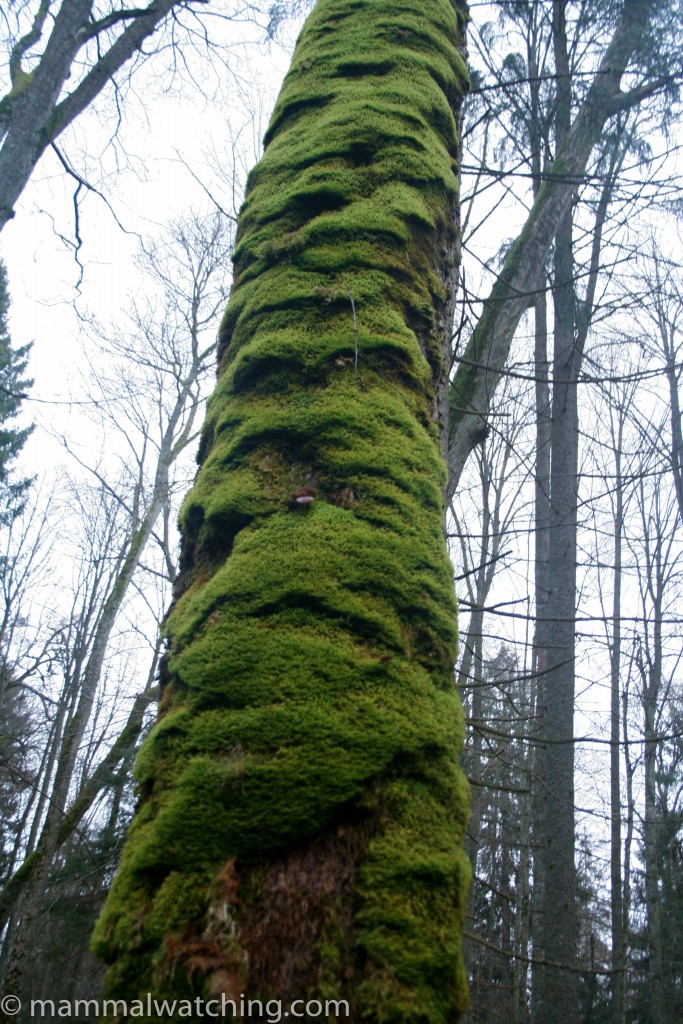
I spent several hours driving each night with a spotlight along the public roads through the park (there is a comprehensive network of roads but most are closed to public traffic). I also took a couple of walks and a long bike ride. My main target species were European Bison and Lynx. I knew there was very little chance of seeing the latter but Bialoweisa is one of the better places to look. Having said that, one guy I spoke to had spent 25 years working in the park and had seen 4! The road from Bialoweisa to Narewka is probably as good as any of the public roads to look for them I reckon.
In February, Bialoweisa is usually deep in snow. But there had been an early thaw and, though some of the ponds were still frozen, just about all the snow disappeared at the end of January. This made finding Bison, in particular, a bit more difficult: they hang around the 20 or so feeding stations in the forest when the snow is on the ground. But they disperse when it melts.
Red Deer and Roe Deer were common. I saw them quite often during the night drives inside the forest. I also saw a few Roe Deer in paddocks just outside Olchowka Village.
One sounder of Wild Boar crossed the road late at night just outside of Bialoweisa Village.
I saw five Bison feeding just outside of the forest near Olchowka Village, early on my first morning, and these were the only Bison we saw (we stopped looking for them once we had found them).
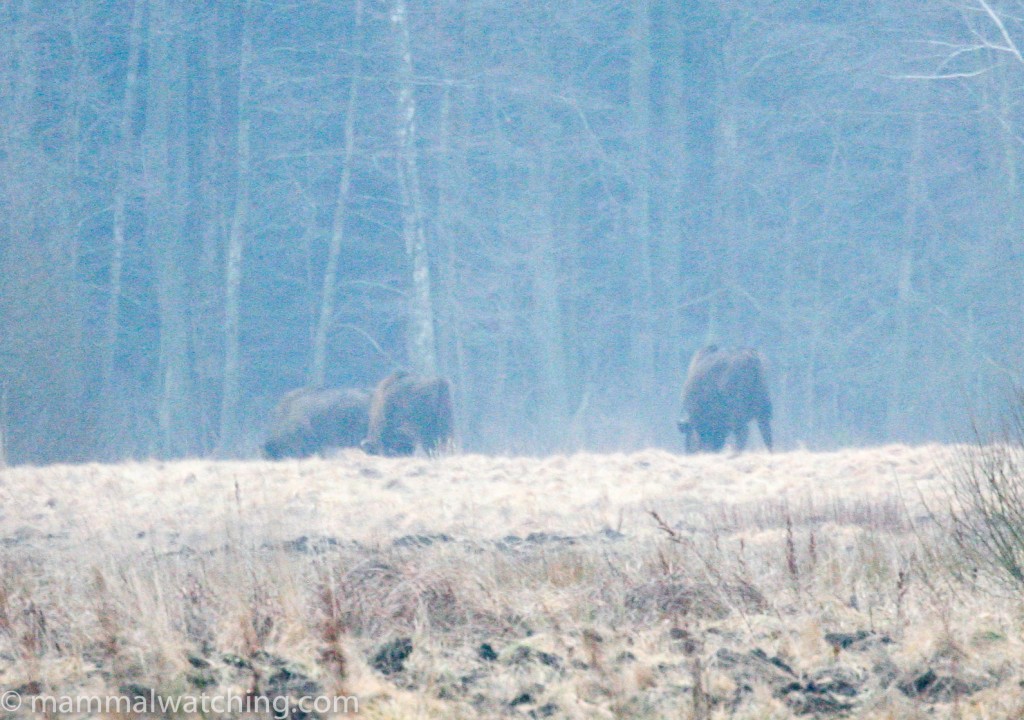
European Bison, Bison bonasus
We saw a couple of Red Foxes during the first night drive. But we only saw one Brown Hare and one Red Squirrel which was a little surprising, although we weren’t looking for them. We also saw quite a few small mammals along the roads at night. I only positively identified two – a Yellow-necked Mouse and a Northern Birch Mouse.
The walk from the car park to Kosy Most (the Crooked Bridge) early one morning produced my first ever Weasel, which stood out like a sore thumb because it was still in its winter Ermine. I have been in many cars where everyone else has seen a Weasel but somehow I had always missed out, so this was particularly pleasing!
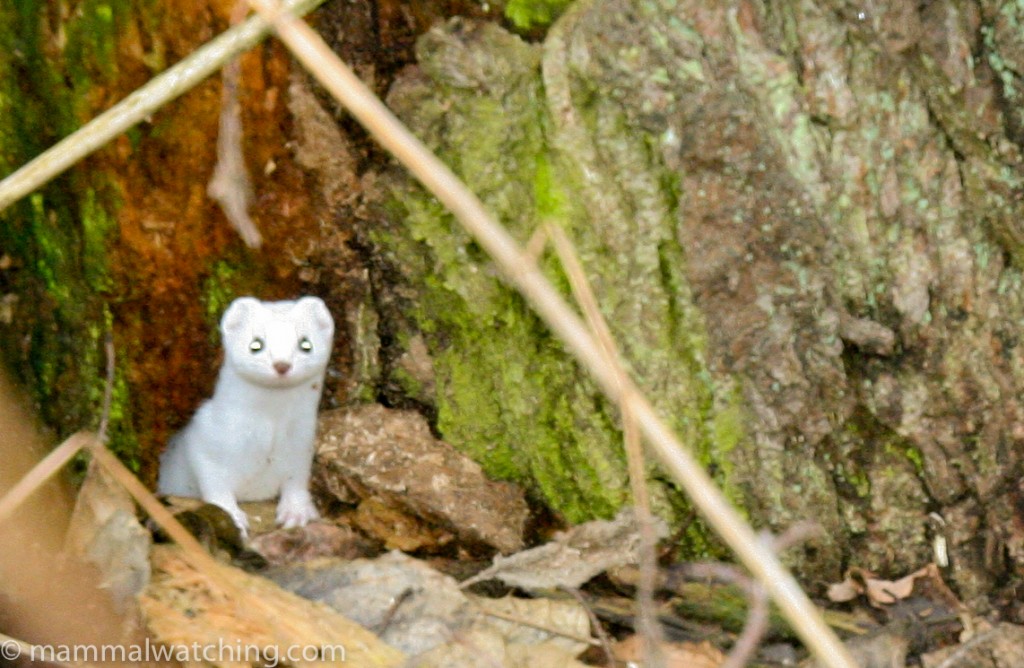
Weasel, Mustela nivalis
The core of the national park is very heavily regulated. You can only visit with an official park guide and though the forest is nice enough inside, I did not think it was worth the money to see it. But the official guide knew his mammals and was interesting to talk to.
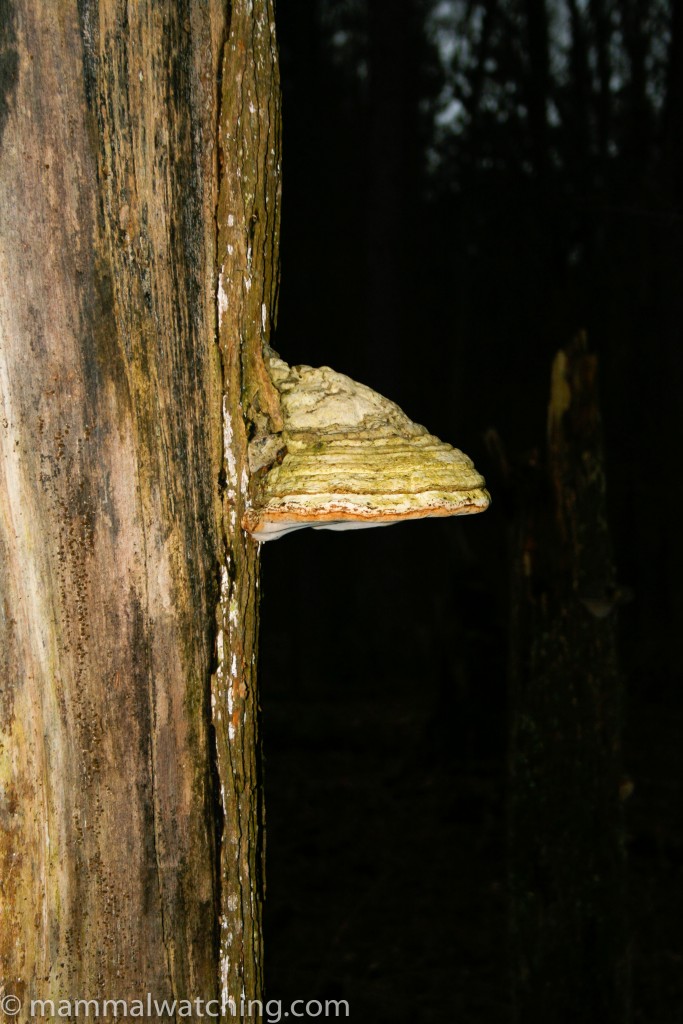
Stuff I Missed
There are several other nice species in the forest that I missed, aside from the Lynx. Polecats are seen quite often and can turn up anywhere. Pine Martens, Badgers and Raccoon Dogs are also seen quite frequently. There are several packs of Wolves in the park and we saw fresh tracks along a dirt road south of Bialoweisa while we were cycling.
There are some nice small mammals too, including Garden Dormice and Striped Field Mice, though trapping is not allowed anywhere in Poland without a permit. About a kilometre along the road from Bialoweisa to Narewka you pass alongside some swampy forest. Look out for a pond full of numbered metal marker poles. This is a study plot for both Common and Miller’s Water Shrews, though the water was still frozen when I was there.
Biebrza Marshes
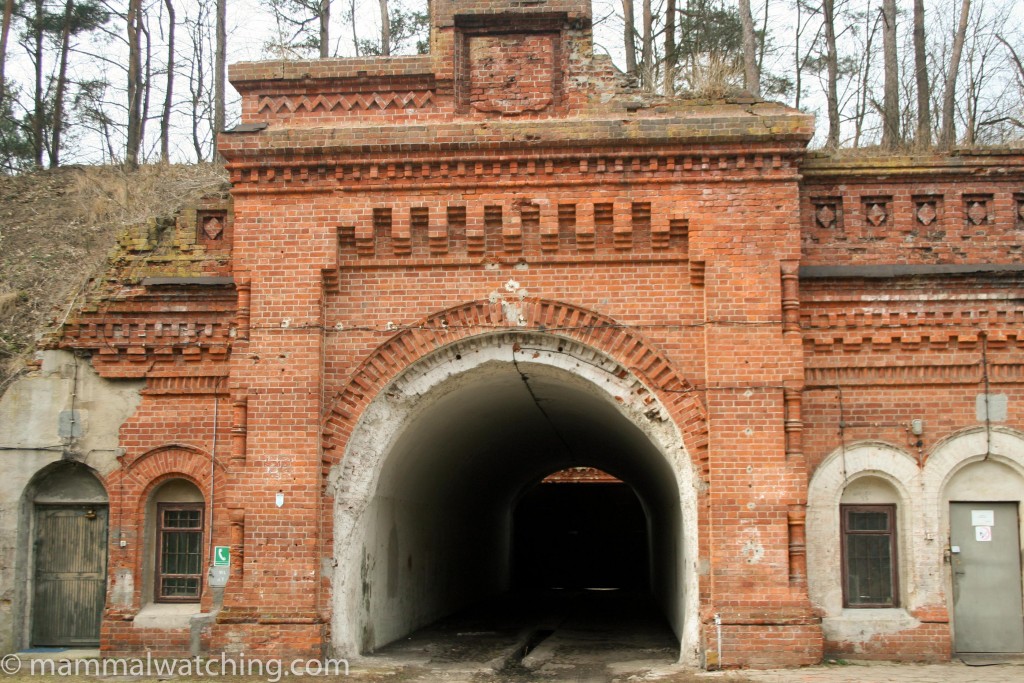
The “Old Soviets”
On the way back to Warsaw I stopped at some old fortifications (Fortress Osowiec), about 60km west of Bialystok. Visitors usually come to see the museum and the buildings, but they are also home to various bat species, some of which roost there in summer and some of which form hibernacula in winter. There were fewer bats than usual, because of the relatively warm weather, but I saw at least four species.
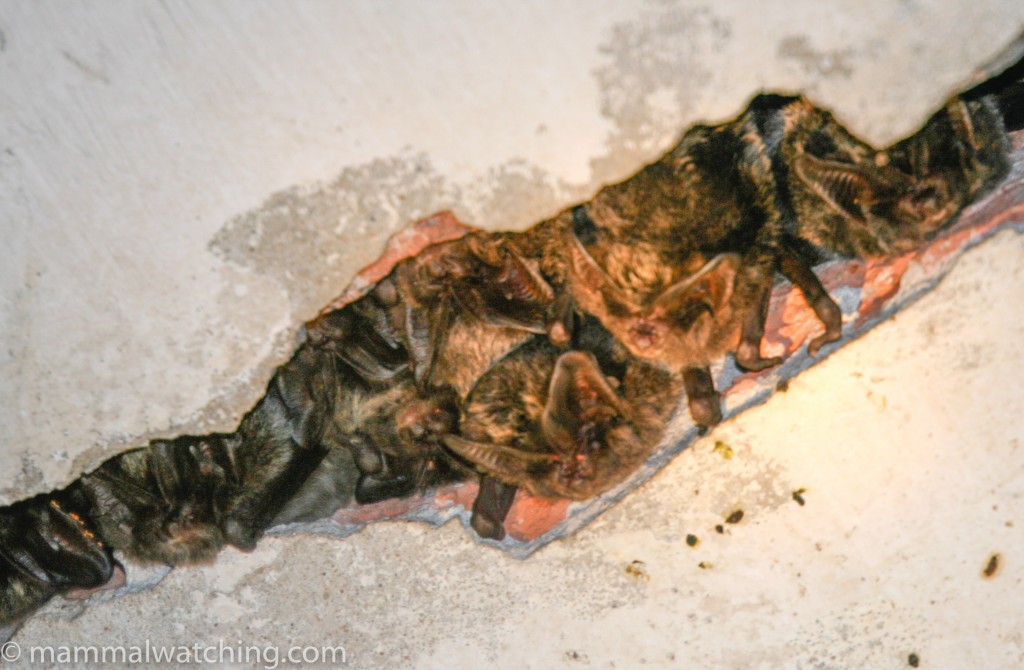
Barbastelles, Barbastella barbastellus
Once again, you can visit only with a guide and the guy who knew most about the bats spoke no English. But it is cheap to visit and was interesting. We saw Natterers, Barbastelles and Brown Long-eared Bats. Other species that occur there include Noctules, Brandt’s Bats, Daubenton’s Bats, Nathusius’s Pipistrelles, Serotines and occasionally Pond Bats. Scientists visit the site regularly so it would be interesting to return to coincide with some field work.
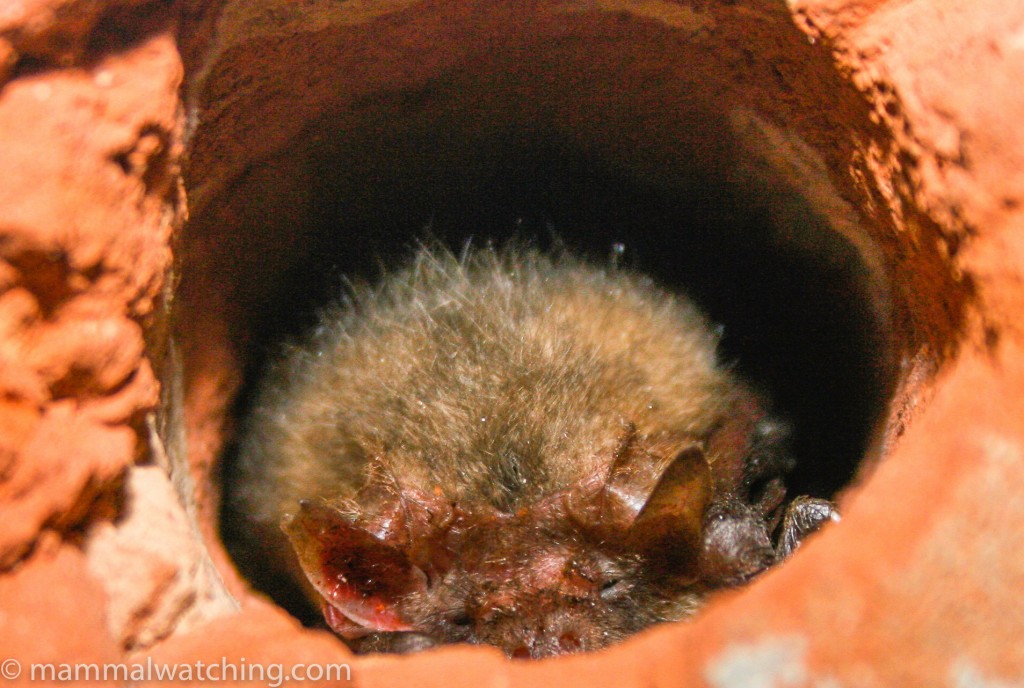
Brown Long-eared Bat, Plecotus auritus
Elk (Moose) are apparently common in the patches of forest along the first 40 kms of road between Osowiec and Warsaw though I didn’t see any.
Other Areas in Poland
Michal Polanski offers the following advice: I would start my trip in the center of Warsaw in Lazienki Park (late evening or early morning) and look around for Red
Squirrels, Hedgehogs, Martens, Weasels, very elusive Foxes and a few small mammals (rats, mice). Last year I had a permit for night stay in the park (which is fenced) and was amazed by the abundance of wildlife there!
Then I would go to Kampinos National Park. Situated just half an hour away from Warsaw. The place is very special. The Park borders Warsaw but some places are really wild. Two- three days would be enough to explore it. Wild Boar, Roe Deer, Elk (Moose), Hares and Beavers are almost guaranteed. With some luck you have a fair chance to spot Foxes, Martens (both Beech and Pine), Weasels, Red Deer, Raccoon Dogs (feral), Otters and Badgers. As most of the park land was bought back from locals there are lot of empty caves and wood houses full of bats. Lynxes (reintroduced) are also there but very shy and you are unlikely to see them.
Another place which I recommend in Poland is the Tatra mountains (but not in the summer- too overcrowded) with a good population of Chamois and Alpine Marmots.
Good places to see Spotted Sousliks (speckled ground squirrels Spermophilus suslicus) are near the cities of Lublin and Zamosc.
One of the best places of Poland for mammal watching are the Bieszczdy mountains (in the south- east corner of the country). Not necessarily the National Park but also the surrounding areas. Lynxes are there but very elusive (although it is the place to see them in Poland!) and also there are really wild population of European Bison (reintroduced), and large populations of Wolves and Brown Bears (in the Tatras they are more habituated). Terrain is difficult but very rewarding. Red Deer are very common there.
Introduced European Mouflon (O. orientalis musimon) can be easly seen in the Klodzko valley near the village of Bardo. The best places to see introduced Dama Deer are near Torun and Elblag.
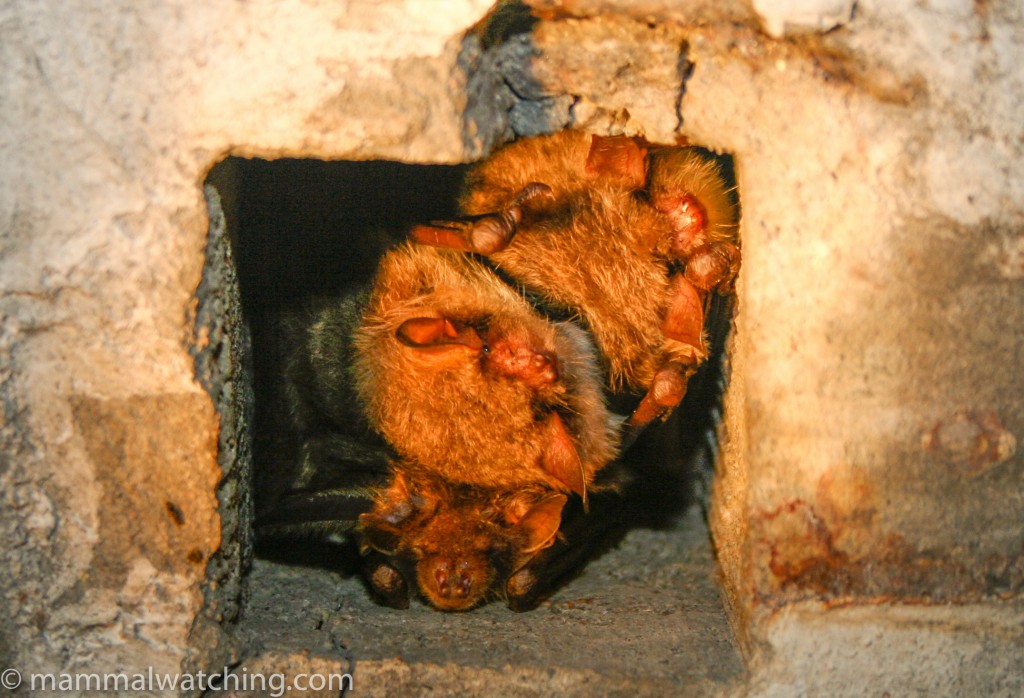
Natters Bats, Myotis nattereri (top) and Brown Long-eared Bat, Plecotus auritus (bottom)
Community Reports
Poland, 2023: Joey Brunk’s recent sightings of 9 species including European Bison and Otters.
Switzerland-Sweden-Poland Roadtrip, 2022: Lorenz Achtnich’s account of a roadtrip in his campervan through 6 countries with 31 species including – in Poland – Wisent and Pygmy Shrew.
Poland, 2021: Jonathan Ben-Simon, 2 weeks & 18 species including Northern White-breasted Hedgehog, Pine Marten and Bison.
Poland, July 2020: Janco van Gelderen, 1 week & 12 species including Pine Marten and Wolf.
Bieszczady Mountains, 2019: Naturetrek, 8 days & 14 species including Bison, Wolf and Lynx.
Eastern Poland, 2020: Valentin Moser, 4 days & 8 species including European Bison.
Osowe, 2019: Romain Boquier, 1 day & 6 species including Bison and Wildcat.
Poland, 2018: Naturetrek, 8 days & 10 species including Eurasian Lynx, Wild Cat and Pine Marten.
Poland, 2017: Naturetrek, 8 days & 19 species including Eurasian Lynx, Wolf and Least Weasel.
Biebrza Marshes and Bialoweisa, 2016: Ben MacDonald, 1 week & with Moose, Beaver and European Bison.
Bieszczady, 2015: Karly Van Ginderdeuren’s account of spotlighting a Lynx.
Bieszczady, 2015: Jan Kelchtermans account of a few days at the Europe’s Big 5 hide in April, with species including Bison, Bear, Wolf and Lynx!
Poland, 2014: Mark Hows, 4 days & 18 species including Spotted Souslik, Pine Marten and Racoon Dog.
Bieszczady, 2014: Jan Kelchtermans account of 9 days in the mountains with sightings of Bison and Wolf plus hearing a Lynx.
Poland, 2012: Jan Kelchtermans, 10 days & 11 species, looking for a Lynx and seeing Wolves. With more information from Mark Hows, a trip participant, here.
Poland, 2011: Stefanie Lahaye, 1 week & 14 species including both Martens and Souslik.
Bialoweisa, 2010: Steve Morgan, 4 days & 9 species including a Eurasian Lynx.


Leave a Reply
You must be logged in to post a comment.